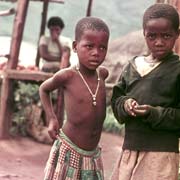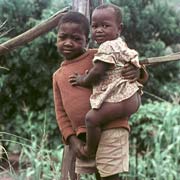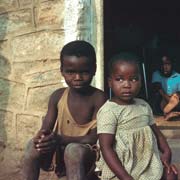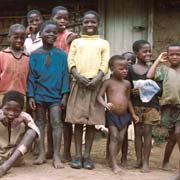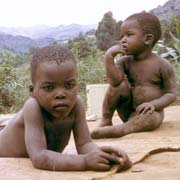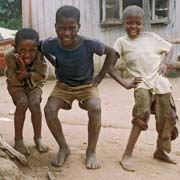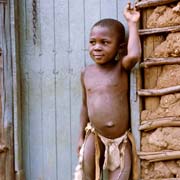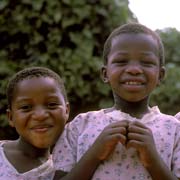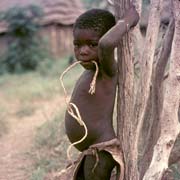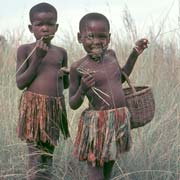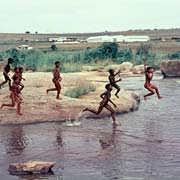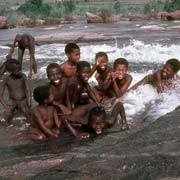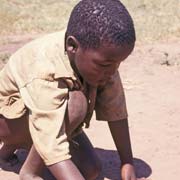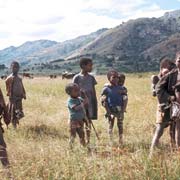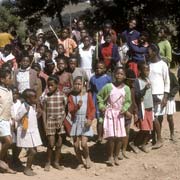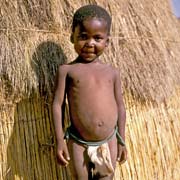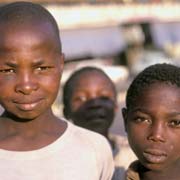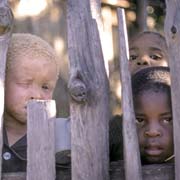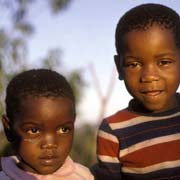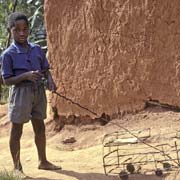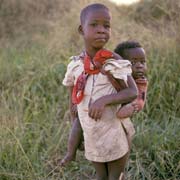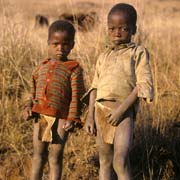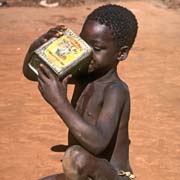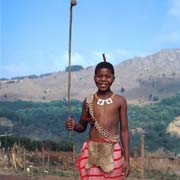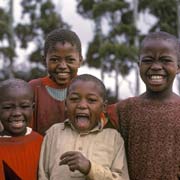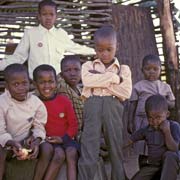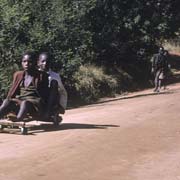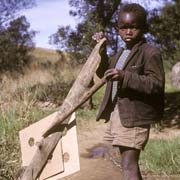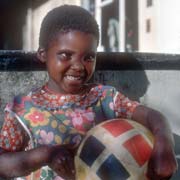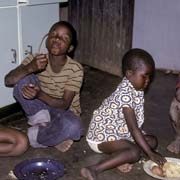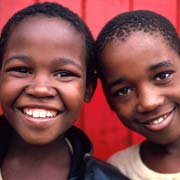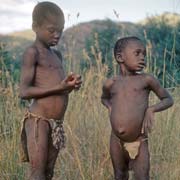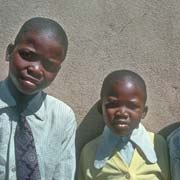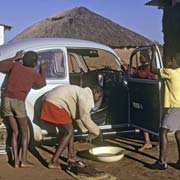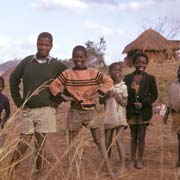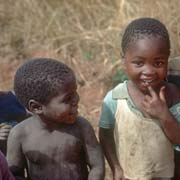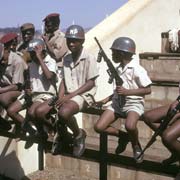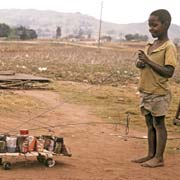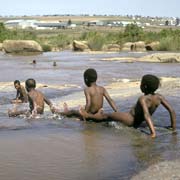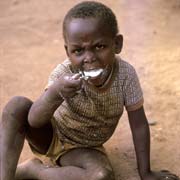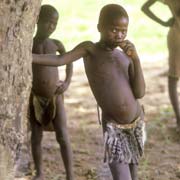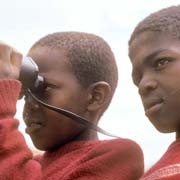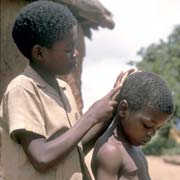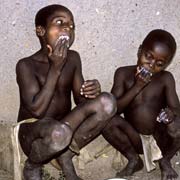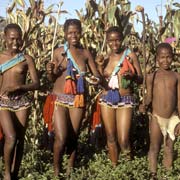Photos of children of Swaziland
Children of Swaziland
Swazi kids are, as everywhere else, happy and cheerful when they live with their families; it is quite common for children not to stay with their parents but with other relatives and in the extended families all have tasks to do, although there is also plenty time for play or swimming in the river.
you may then send it as a postcard if you wish.
Girls learn from an early age the role of women in this society, looking after their younger siblings and helping around the house. Boys often have to look after their father's cattle and sometimes even can be seen along the roads trying to sell handcrafted wooden bowls made by their relatives, attractive dishes with different coloured wood; they may perform impromptu "sibhaca" dancing to attract customers.
Swazi children generally seem very well adjusted and know their place in society from an early age; they are involved in the traditions from an early age too. Although girls nowadays wear store-bought dresses, small girls can often be seen wearing the traditional "luvadla" skirts and, when a bit older, participate in the "uMhlanga" (Reed Dance) and uMcwasho age-grade ceremonies wearing the "indlamu", a very brief skirt decorated with beads. Young boys, who often dress only in the "emajobo" loin covering consisting of two pieces of animal skin, can be seen looking after their father's cattle and at the iNcwala First fruits ceremony. When the Swazi army was established, boys in miniature uniforms with toy rifles could be seen soon afterwards.
Children are the same all over the world and in Swaziland too, childhood is a time of play and learn. Although many families are financially poor and there is no money to buy toys, kids are never bored: they make their own. It is quite common to see boys pushing cars, cleverly made from iron wire, with a working steering mechanism and running on wheels made from shoe-polish tins. Trolleys, with which they may race downhill, are made with ball-bearing assemblies for wheels and there are many other examples of ingenious contraptions made from discarded materials.
But they are also quite early given responsibilities and of course there is school which is taken very seriously: school fees have to be paid by parents who can hardly afford it, not everyone out of a family may be able to go to school as a result and the children are therefore expected to do their very best. They learn at a very early age to respect their elders and to obey their older siblings as well. Recently however many children have had to accept responsibility running whole households as a result of the tragic AIDS epidemic that has devastated the country long after these photos were taken.



